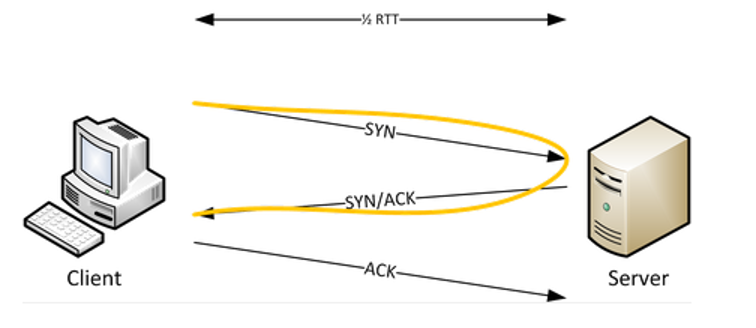I’ve created a traffic analyser to help network engineers detect issues related to quality of experience.
What is QoE?
The ‘Quality of Experience’ (QoE) level for an Internet service provider is the client’s level of satisfaction using the Internet for variety of applications. From a client point of view, this indicates the overall Internet quality, based on which the service provider is judged. Clients may decide to either renew or cancel service contracts based on the QoE they experience.
It sounds simple, but it’s actually quite difficult for ISPs to measure QoE. Usually, they monitor Quality of Service (QoS) by using the ICMP protocol to measure delay or they try to measure download rates to check the supported bandwidth rate of their services. These types of measurements are mostly carried out from a network engineer’s point of view, or from the monitoring server’s side, and does not actually reflect the quality that the clients or users have experienced.
For example, a client might call customer support and say “Everything seems fine, except for WhatsApp. It’s taking longer than usual to download videos.” At the ISP end, the technician might check the user’s line quality, and try to check the delay to WhatsApp by using an ICMP ping, and might not find any problem.
So who’s right? The non-technical client? Or the network engineer in the network operation centre? The answer, well, both of them. However the network technician can’t get to the root of the issue easily, and also has no means to proactively detect the issue, even if many clients are experiencing the same problem at the same time.
TCP RTT Analyzer
I’ve created a traffic analyser to help network engineers detect these kinds of issues related to quality of experience. It works by analysing the TCP establishment delay time for top applications and websites on the Internet and shows the results in a GUI. This can provide an overview of network status quality for top applications and websites that affect the user’s quality of experience. I’m using TCP sessions for analysis as it’s the transport protocol, and changes in network quality could affect it.
TCP RTT
TCP Round Trip Time or RTT is the length of time it takes for a signal like SYN to be sent plus the length of time it takes for an acknowledgment of that signal to be received. In the diagram below, the orange line shows the RTT for sending the packet SYN from the client to the server plus the time it takes for the client to receive the acknowledgement sent by the server in reply.

Figure 1: Session established by the client to the server
Capturing Sample Traffic and Analysing TCP RTT
The software captures and stores live traffic to find the TCP RTT of new sessions in the network and then to subsequently analyse them using the RTT Analyser tool. Since the capture point is in somewhere in the middle of the path from the client to the Internet, the RTT analysis returns time from the point of capture to the server and back to the capturing server.
The analyser tool then starts to open captured traffic files, analyses them and returns the RTT plus information to specifying the destination of that session. This helps to find the RTT of heavily used applications like Whatsapp or Instagram. It calculates the RTT using the difference between the timestamp of the first packet forwarded to the Internet and the related reply packet. Using these two timestamps, the analyser can record the session’s delay. The software also uses the SSL server name or HTTP host name field in each flow and compares them with a dictionary developed specifically for this to find the relevant website or application. A group of twenty top destinations has been selected to be monitored using this system. This list is flexible and can be changed at any point in time. For the test phase, the list below was used:

Figure 2: Top-rated list of Websites and Applications
By linking all of this data like the TCP RTT, destination of sessions plus top-rated apps and websites together in a database and running some statistical formulae, a handy summary of network quality for a sample group of clients is ready! By visualizing them as graphs in a GUI, a useful dashboard of favourite apps and websites has been created. Now this graph shows almost exactly the delay time of select apps and websites in this specific network.
The graph below shows the result of sample traffic in a service provider in the Middle East. The first graph uses Instagram as an example. It shows that most of the times, the RTT is 100 milliseconds but sometimes it extends to 150 milliseconds. Since these graphs are created based on the median of data available in the database, it means that a majority of the clients are experiencing a 50ms delay in getting Instagram content. Now a network engineer can detect such anomalies and try to find the root cause or solve it temporarily, for example, by changing BGP settings to switch to other Internet providers. And this can be done before getting any calls or customer complaints.

Figure 3: TCP RTT of Instagram Application
Linking to BGP table
To help network engineers to go deeper in their analysis and to speed up finding the root cause, it’s possible to add another factor to the graphs, and that is the upstream provider. The source IP addresses of TCP sessions (so the IP addresses of clients) are helpful here. Now the graphs are based on source IP addresses grouped by each active upstream provider of specific IP address groups. The software gets data from BGP tables and links to RTT results to make the last report per link. This makes it possible to detect QoE for on each upstream provider. A network engineer can now see which upstream provider works best for specific applications or top-rated websites.

Figure 4: TCP RTT of WhatsApp Application per Upstream Provider
What to do next?
In the next phase, anomaly detection and machine learning will be added to the system to automatically find anomalies in reports. Then an alert could be generated and sent to the network operation centre. The goal remains to find issues proactively and to improve the overall Quality of Experience for customers. After all, the customer is king!


Comments 0
The comments section is closed for articles published more than a year ago. If you'd like to inform us of any issues, please contact us.